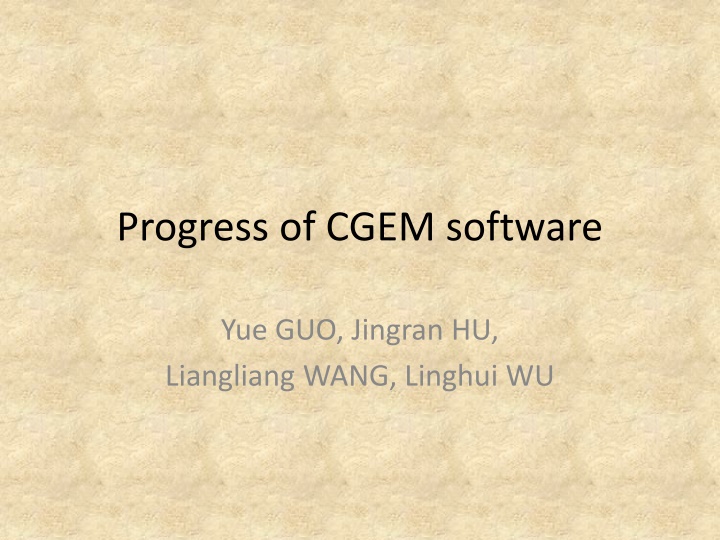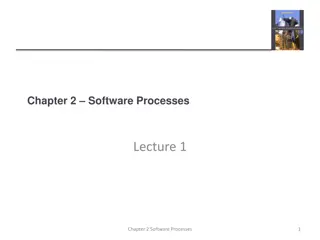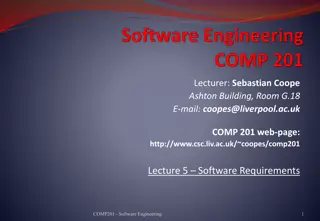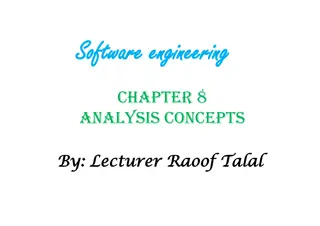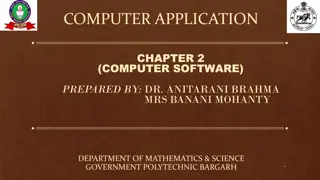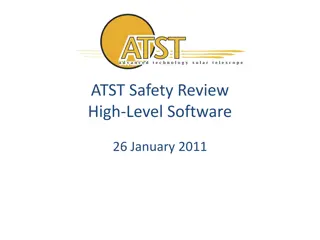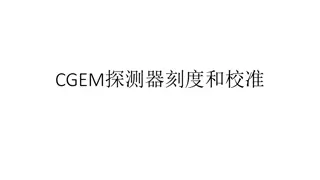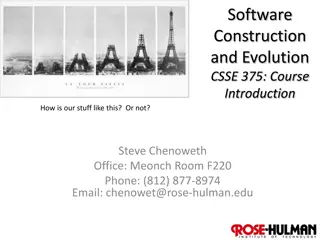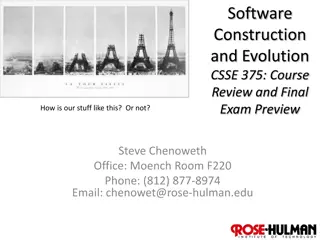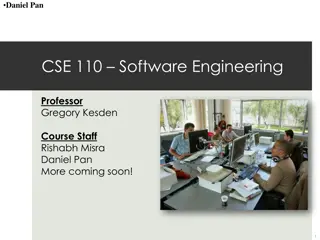Progress of CGEM software
Featuring the progress of CGEM software development, simulation of detector components, electric field analysis, avalanche simulations, and reconstruction flow for CGEM and DC. Explore the motivations, methodologies, and outcomes of the project through detailed simulations and images.
Download Presentation

Please find below an Image/Link to download the presentation.
The content on the website is provided AS IS for your information and personal use only. It may not be sold, licensed, or shared on other websites without obtaining consent from the author.If you encounter any issues during the download, it is possible that the publisher has removed the file from their server.
You are allowed to download the files provided on this website for personal or commercial use, subject to the condition that they are used lawfully. All files are the property of their respective owners.
The content on the website is provided AS IS for your information and personal use only. It may not be sold, licensed, or shared on other websites without obtaining consent from the author.
E N D
Presentation Transcript
Progress of CGEM software Yue GUO, Jingran HU, Liangliang WANG, Linghui WU
Outline Garfield Simulation Reconstruction CGEM cluster reconstruction Track fit Summary 2
Garfield simulation Motivation To understand the drift property in magnetic field and implement more realistic digitization model Use Garfield++ Construct the detector and calculate the field map using Ansys 3
CGEM of a hexagonal geometry The basic cell,which is used to construct the whole detector by periodic arrangement in X and Y 4
Electric field from Garfield -3190V Cathode Drift 3mm -2740V -2350V -2050V -1670V -1370V -1000V GEM3 Transfer1 2mm GEM2 Transfer2 2mm GEM1 2mm Induction Anode 0 A typical voltage from 300 to 500V is applied between the two sides of the foil. The field reaches 100kV/cm in the hole. The expected gain should be around 10^4. 0 0.2 gem-3 0.4 anode -0.2 -0.5 cathode gem-2 gem-1 5
Simulation of the avalanche AvalancheMicroscopic Accurate simulations of electron trajectories in small-scale structures Detailed calculations of ionization and excitation processes Transporting electrons on a microscopic level Time consuming AvalancheMC Calculate s=vd t in the direction of Vdat the local field A random diffusion step is sampled from Gaussian distributions Time consuming but Faster than AvalancheMicroscopic 6
AvalancheMicroscopic Get gain about 103 Set the limit of size of an electron avalanche to 1000 Time consuming Need more study 7
AvalancheMC Without magnetic field Get the gain about 104 Half of generated electrons are absorbed by the 3rdGEM 8
Reconstruction flow for CGEM + DC 1. Cluster reconstruction for CGEM: fired strips cluster (preliminary algorithm finished) 2. Track segment finding in CGEM (not started) 3. Track segment finding in DC (exist) 4. Combination of track segments (need modification) 5. Global fit (need modification) 6. Kalman filter (in progress) 10
Cluster reconstruction for CGEM Package: CgemClusterCreate Search for continuous fired X strips Charge weighted geometrical center Correction to the position on track Intersections as clusters Search for continuous fired V strips rec_v 11 rec_x
Variables in RecCgemCluster RecCgemCluster type item Description int m_layered ID of CGEM Layer int m_sheeted ID of CGEM sheet int m_flag Type of cluster: 0-X, 1-V, 2-XV double m_energydeposit Total energy deposit double m_recphi X position (phi) doulbe m_recv V position 12
Distribution of number of fired strips in each cluster single muon MC sample 1.0 GeV |cos |<0.93 Number of fired X strips Number of fired V strips Average number of strips that each cluster contains is 2~3 in either direction 13
Resolution for 2D readout in drift layer v= 146.7 m = 134.9 m Xrec Xtruth(mm) Vrec Vtruth(mm) 14
Track fit using Kalman filter Reconstructed tracks (with MDC outer chamber hits ) as input Use MDC hits and CGEM clusters to update the track parameters from the outermost point to the origin Take into Account the multiple scattering, energy loss and NUMF Obtain track parameters and covariance matrix under different hypothesis (e, , ,K, p) 15
Difference between the fit and truth z phi zfit ztruth(cm) phifit phitruth(rad) 16
Momentum resolution 1GeV/c + 1GeV/c - pfit ptruth(GeV/c) pfit ptruth(GeV/c) 17
Summary Garfield simulation Get some preliminary results CPU consuming is a big problem Reconstruction A preliminary cluster reconstruction package is developed The Kalman filter based track fitting with full simulation of CGEM + outer DC is in progress 18
Backup 19
Drift time distribution Data Data e- e+ Drift distance (mm) Garfield Garfield e- e+ Drift time (ns) 20
X-T relations of MDC Data Garfield sim Drift behavior from Garfield simulation are comparable with data
